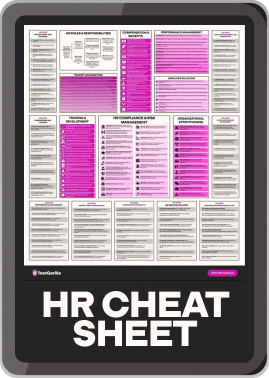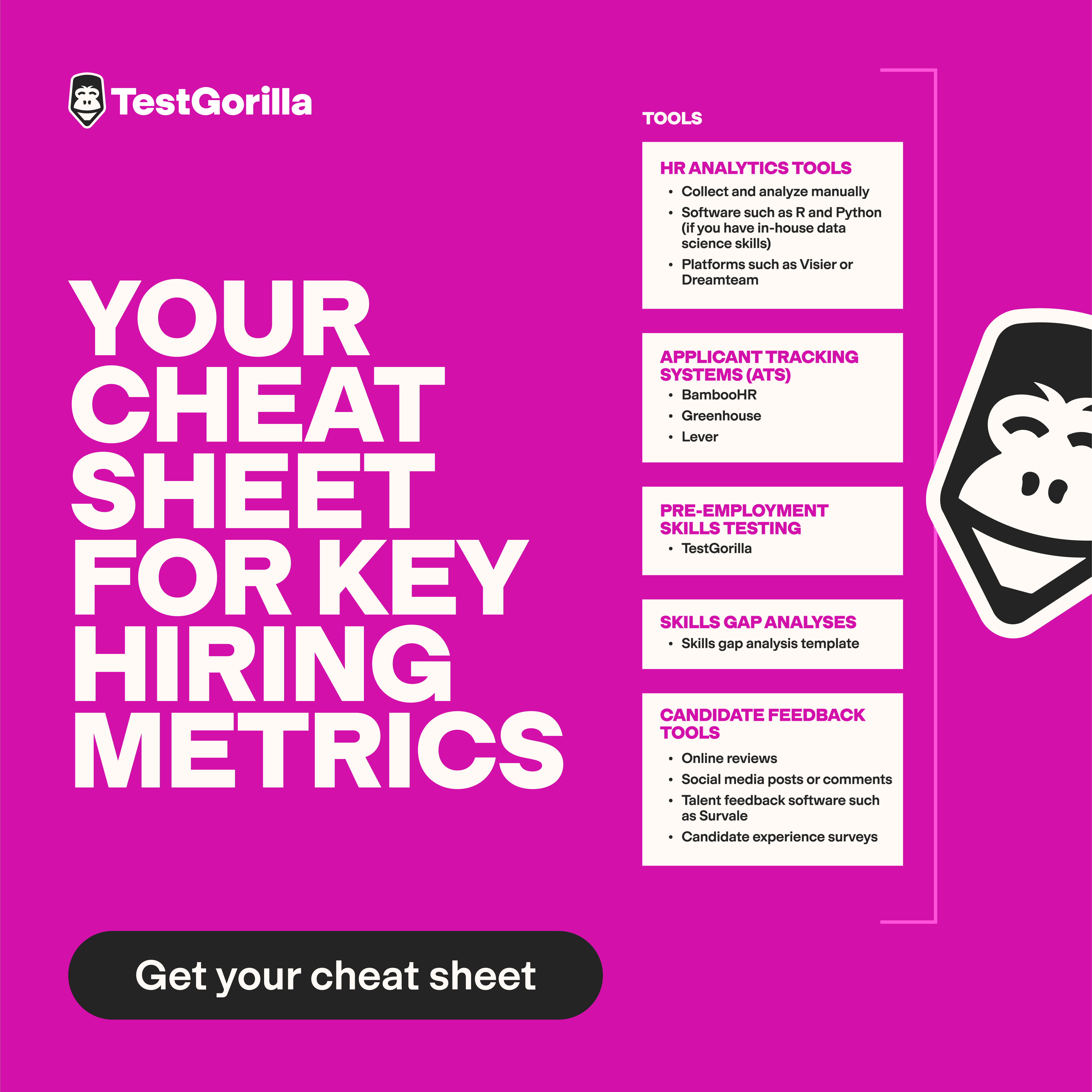5 tricky Julia developer interview questions to ask when hiring
Hiring the right Julia developer to take your research and machine learning projects to the next level can be challenging. A lot of applicants say they have Julia experience on their resumes, when actually they lack true fluency or the performance-oriented mindset needed to get the most out of Julia programs.
Choosing the wrong developer can grind your projects to a halt or result in poorly performing code. So, it’s important to make sure you’re testing candidates’ Julia coding skills and asking tough questions during your interview process.
In this guide, we’ll share five tricky Julia developer questions and explain what answers you should expect from top candidates.
Why Julia developers are unique (and tricky to hire)
Julia is a newer programming language that’s still growing its ecosystem. Here are three reasons it’s challenging to find and assess Julia developers:
1. Julia is still growing
Julia was introduced in 2012 as a scientific computing language, but it has only recently gained popularity among a wider audience of developers outside of scientific applications. That means many developers who claim to know Julia have only dabbled in it. They may be able to lean on their experience in related languages like Python, R, and MATLAB, but don’t have a deep understanding of Julia’s fundamentals.
2. Julia requires a performance-oriented mindset
Using Julia to its maximum potential requires developers to have a performance-oriented mindset, which not all candidates have. It’s not just about solving problems – candidates need to be extremely proficient with memory allocation, type stability, asynchronous operations, and vector machines.
3. Code optimization matters
True Julia fluency means knowing not only how to write Julia code but also how to optimize it. Many developers can write messy or inefficient Julia code; however, top candidates should be comfortable writing scalable and maintainable programs, as well as be capable of debugging code quickly.
Given these factors, it’s essential to be thorough in assessing Julia developers to ensure they’re experts in this programming language.
What to look for in a strong Julia developer
Here are some of the key skills to look for when hiring a Julia developer:
Proficiency with multiple dispatch: Candidates should know how to use Julia’s multiple dispatch and method specialization capabilities to improve code efficiency.
Understanding of memory optimization: Julia developers need to know how to conduct performance profiling and allocate memory efficiently.
Experience using Julia libraries: Developers should be proficient at deploying Julia’s numerical libraries, such as Flux.jl, DataFrames.jl, and LinearAlgebra.jl. They should also have experience with Tidier.jl, a Julia-specific implementation of R’s Tidyverse collection of packages.
Ability to write clean, maintainable Julia code: Developers must write clean, well-documented Julia code that’s reproducible and maintainable over time.
Performance-based thinking: Julia is a performance-focused language, and developers should be adept at thinking and coding to maximize performance. According to Cristian-Ovidiu Marin, CEO of OnlineGames.io, “Asking the right questions isn’t just about gauging technical skill – it's about understanding how candidates think within that ecosystem.”
The best insights on HR and recruitment, delivered to your inbox.
Biweekly updates. No spam. Unsubscribe any time.
5 tricky Julia developer interview questions (and what to look for)
1. What is multiple dispatch in Julia, and how is it different from traditional object-oriented programming?
Why it’s important: Multiple dispatch is a foundational capability of Julia and a big part of what sets this language apart from related statistical computing languages like Python and R. Candidates should demonstrate a clear understanding of how multiple dispatch works and when to use it.
Strong answer: Multiple dispatch enables writing multiple implementation methods to a single function in Julia. When the function is called, Julia will automatically use the appropriate method based on the function's inputs. This allows for creating functions that do different things based on the runtime environment.
It’s possible to achieve similar functionality in Python and other object-oriented programming languages with single dispatching by using overloading. The difference is that overloading only uses the runtime type of the first function input to determine which method to apply, while the remaining inputs are read from their compile-time type. With Julia’s multiple dispatch, all input types are read during runtime to determine the function method.
Julia’s multiple dispatch is important because it makes it much easier to write generic code that can produce different specialized data structures based on the runtime environment. It also makes Julia more composable, which is useful for combining code from multiple libraries.
2. Explain type stability in Julia. Why does it matter for performance?
Why it’s important: Type stability is a key compiler-level concept in Julia that can cause performance issues if not handled properly. Strong candidates should understand not only what type stability is, but also how to manage it to maximize code performance.
Strong answer: Julia is a dynamically typed language, so normally a variable's type is determined at runtime and can change based on its value. If a function is type stable, that means the type of the output only depends on the types of the inputs and not on their values, so the function’s type can be determined at compile time.
This is important for performance because of how Julia handles type uncertainty during compiling. If a function is dynamic, Julia will automatically create code to force type checks during runtime, which reduces performance.
On the other hand, if all functions in a program are type stable, Julia can determine the type of all functions at compile time. The compiler will then build a statically typed version of the code in which all variables are forced to hold their type. This is essentially the same as optimized C code.
3. When do you decide to drop from Julia to C?
Why it’s important: This question comes from Cristian-Ovidiu Marin of OnlineGames.io. He says it’s important because “Julia is prized for high-performance computing, and answers to this question show if a candidate can optimize in real-world scenarios.”
Strong answer: Julia’s advantage over C is that it can automatically generate code at compile time, so it’s often much faster to write a program in Julia than in C. The automatic choices that Julia makes also tend to result in code that runs faster than average C code.
However, C still offers higher performance than Julia for complex tasks if it’s written carefully and thoroughly tested. So, the most productive approach is usually to prototype a program in Julia, then rewrite it in C for production code. Most of the time, switching to C will only yield a small performance increase, so it’s only worth dropping to C if performance is at a steep premium.
4. What’s the difference between AbstractArray and Array in Julia?
Why it’s important: Understanding the difference between AbstractArray and Array in Julia signals that a candidate has strong foundational knowledge of types in Julia. It’s also an indicator of their proficiency in writing general-use code that can be adapted across multiple programs.
Strong answer: An AbstractArray in Julia can include variables with unknown types, which means Julia will automatically generate code during compile time to force type checks during runtime. An Array, on the other hand, includes only variables with stable types. This enables Julia to optimize the code during compiling and store the array data in contiguous chunks of memory.
In most cases, any Julia Array can also be an AbstractArray. So, when it’s possible to lock types in an array and use Array, it is typically more memory-efficient to do so.
5. How do you profile and optimize a slow Julia function?
Why it’s important: Optimizing slow functions is crucial to the overall performance of code written in Julia. Candidates should be proficient in identifying which pieces of their code are causing performance issues and addressing them.
Strong answer: One of the best ways to profile the speed of a Julia function is to use @time, which provides information about the time a function takes to execute and how much memory was allocated to the function. Unusually high memory allocation is often a sign that there was inefficient code generated during compile time, which could be because of type instability or the creation of a large number of temporary arrays.
Another profiling technique is to use @code_warntype, which highlights any arguments in a function call that don’t have a stable type. Unstable types lead to extra code being generated at compile time, so @code_warntype is an easy way to ensure that all variables are type-stable.
Preallocating memory is another path to take to optimize Julia functions, especially for successive data manipulation operations. This involves reusing the memory of an array by repeatedly overwriting it during a function’s execution rather than allocating new memory for each new array.
Red flags to watch for
Keep an eye out for these red flags when assessing Julia developers:
Can’t explain type stability: Type stability is central to how Julia’s compiler optimizes functions, so developers who don’t understand typing are unlikely to write high-performance code.
Over-reliance on Python terminology: Julia has a lot of similarities to Python, but developers need to be comfortable writing Julia-native code and using this language’s unique libraries.
Avoids discussing reproducibility: If candidates don’t discuss reproducibility, it could be an indication that they lack experience annotating Julia code or working in collaborative teams.
Can’t explain performance profiling: If candidates can’t explain their process for profiling the performance of Julia code, they may not know how to optimize Julia for high-performance computing capabilities.
Go beyond interviews: Use code assessments
Tough interview questions can reveal a lot about candidates’ knowledge of Julia fundamentals. But to really determine if a developer has the talent you need, it’s crucial to test their Julia skills.
You can assess applicants using any of our Julia coding tests, which can be fully customized with your own programming challenges for machine learning and statistical analysis. We also offer universal coding tests that candidates can complete using Julia. These tests reveal how candidates approach coding in Julia, whether they write reproducible code, and how they optimize for performance.
We recommend using our assessments to screen Julia developer candidates to shortlist the most skilled individuals to invite for an interview. This saves your hiring team time and enables you to tailor your interview questions to each applicant’s individual strengths and weaknesses.
Hire the top Julia developers today
Tricky interview questions can help you identify talented Julia developers. However, candidates need to be able to do more than just explain the fundamentals of Julia – they also need to prove they can write clean, reproducible, and high-performance Julia code, as well as succeed in your company.
TestGorilla offers a comprehensive approach to identifying the best candidates. With our talent assessments, you can evaluate candidates’ ability to write and optimize Julia code, assess their collaborative and communication skills, and gauge their culture fit.
Ready to hire the best Julia developer? Book a demo today!
You've scrolled this far
Why not try TestGorilla for free, and see what happens when you put skills first.




















